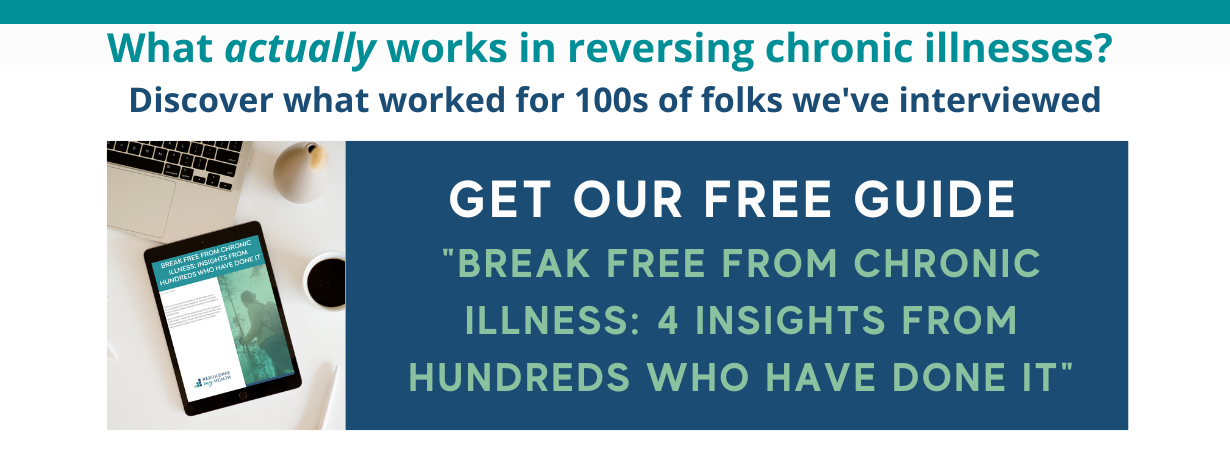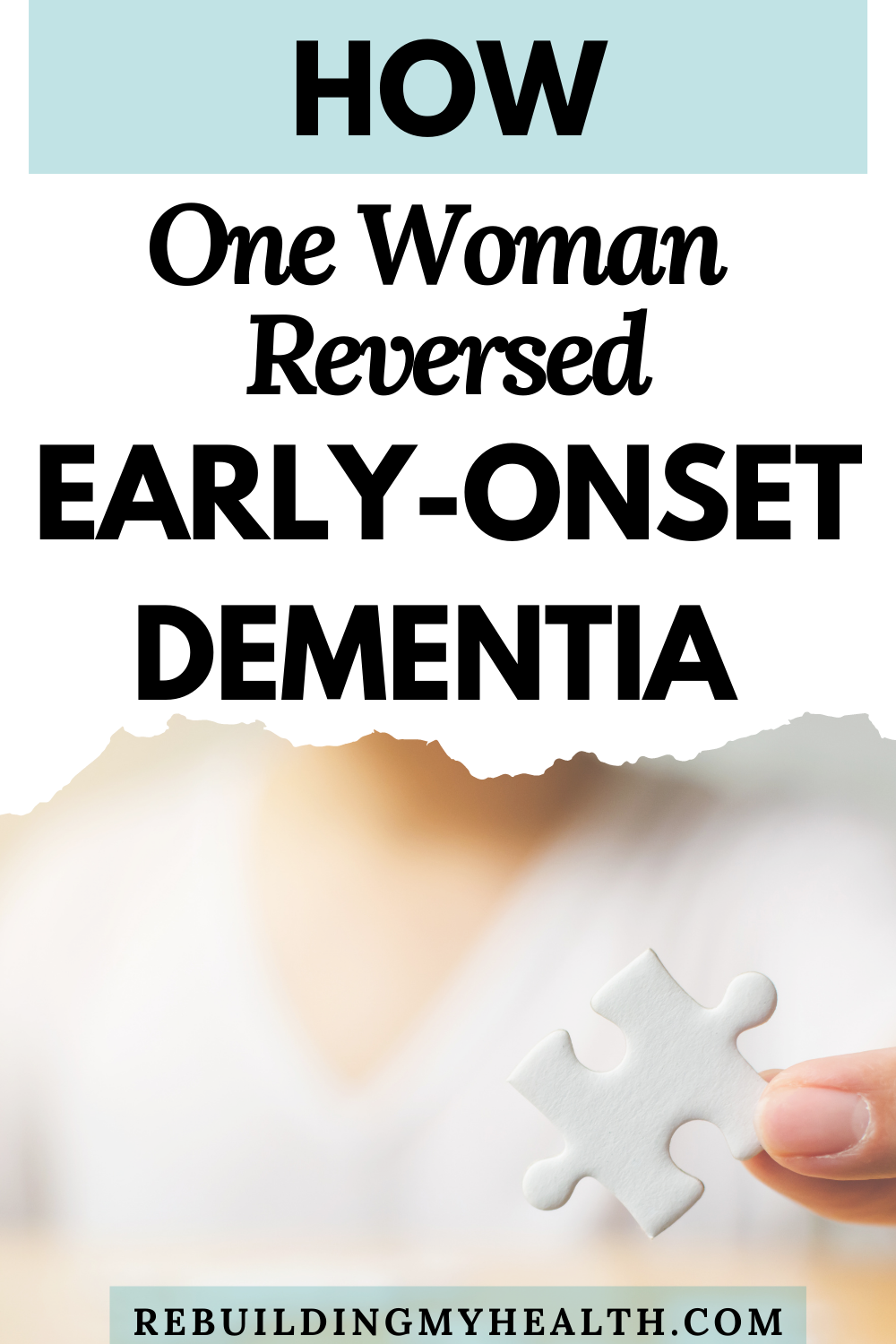Dementia Researcher-M.D. Reverses Her Own Early-Onset Dementia
“Dementia is not a death sentence. There are things we can do to reverse it when we know what’s causing it. I don’t think anybody ever would have believed that was possible.”
– Kat Toups
By the age of 50, Kat Toups, an M.D. in psychiatry, had spent more than a decade leading clinical trials’ research on dementia medications. Then, ironically, she began displaying alarming signs of dementia herself.
Kat had served as the principal investigator on over 100 clinical trials for 12 years, including 20 failed trials for Alzheimer’s disease drugs.
Throughout that time, she had been giving her patients the same handful of words to remember and repeat back to her. Then, she stopped being able to recall those very same words. Even more concerning, sometimes patients remembered the words when she couldn’t.
She and her family soon noticed other cognitive lapses. Kat would forget how to complete tasks on her computer immediately after her husband had just explained them.
Her husband noticed that, suddenly, she had started driving like an elderly person.
And most disturbing, words often sounded garbled to her.
“We were watching a movie and I turned to my husband and said, ‘Why are those people mumbling?’ My husband looked at me like I was crazy and I just burst into tears because I did feel crazy,” she says.
The implications of these events were daunting.
“I knew that when I treated patients with dementia who were in their early 50s, the dementia would progress much more rapidly than later-onset Alzheimer’s disease,” she says.
 Finding the Root Causes of Dementia
Finding the Root Causes of Dementia
Leading up to those cognitive lapses, Kat had begun experiencing seemingly unrelated health issues. She had developed new allergies and sensitivities to foods, fragrances, chemicals and more, which led to the skin condition psoriasis.
“Every night I would wake up several times to put on lotions and steroids because I couldn’t sleep with the itching,” she says.
Her fatigue, too, had become constant. That, and the cognitive lapses, ultimately forced Kat to quit working. At the time, she expected to take a month off, but found that healing would take much longer.
“That first year off work, I could barely get out of a chair,” she says. “I made myself get out of bed every day but didn’t have the energy or brainpower to do anything. I was in survival mode.”
Opting Not to Try Dementia Drugs
Because of her background, Kat intimately understood the limits of dementia drugs.
“I never considered taking medication for dementia. I already knew the limitations and failures of medication, and I was more interested in trying to figure out why I was having this problem instead of taking something that would, at most, slow it down for a year,” she says.
Kat’s search for answers took her to a string of “ologists:” rheumatologists, endocrinologists and gastroenterologists.
Testing uncovered inflammation and autoimmunity, though her autoimmunity wasn’t specific. “It didn’t yet have a name,” she says.
Kat suspected her inflammation and dementia were connected, but none of her doctors saw links between them. Frustrated, she began looking for answers on her own.
She turned to functional medicine, which looks for and addresses the root causes of symptoms. With the little brainpower she could muster, she began taking courses through the Institute for Functional Medicine.
Unexpectedly, she found each course module relevant for her. With those insights, she began a multi-layered, multi-year approach to regain her health and brain:
An anti-inflammatory diet
Up to then, Kat had followed a low-fat diet – the type stressed in her medical training. However, she soon realized two problems with that route. For one, many of the foods she consumed were inflammatory. And second, her body and brain needed fat to function optimally.
Kat began an elimination diet, cutting out the top foods that can be inflammatory, including gluten, dairy, soy, eggs, nuts and nightshades.
Balancing hormones
Since her 40s, Kat’s estrogen levels had tested low, and she often experienced migraines and cognitive lapses before her periods began.
“I went to my primary care doctor and I said, “I’m having these migraines and I’m having word-finding difficulty and she said, ‘Oh, welcome to peri-menopause,’” Kat says.
Through research and study, Kat came to understand that, when hormones are out of balance, the nerves can start degenerating. That was clue #1 to her cognitive decline.
Raising cholesterol
Cholesterol, she also learned, was just as critical to nerve function. With low cholesterol levels, around 135, her nerves and brain were likely not getting what they needed.
“Optimal cholesterol is 200-240, but decades of medical training taught me that’s too high,” she says. “Cholesterol is a precursor to all your hormones. And because the brain is 65 percent fat, lack of fat can impact the myelin sheath around the nerves.”
In fact, brain scans did reveal areas of her brain with demyelination – another clue. To combat that, she began eating healthy fats such as coconut oil and coconut milk, olive oil and avocados.
Along with adding healthy fats, she traded her once mostly vegetarian diet for meals with free-range meat or chicken.
Removing Toxins, Adding Nutrients
With those steps, some of the fatigue and brain fog started to lift. However, she still had more hot spots to address.
- Dental toxins – To reduce heavy metals toxicity, Kat had asked her dentist to remove mercury fillings from her teeth. Next, she replaced two crowns and removed an old root canal, which was likely a source of infection.
- Nutrient deficiencies – When she uncovered a severe B12 deficiency, she began injections for those vitamins.
- Detox – After finding high levels of four mycotoxins, likely from living near mold, she started binders to remove those and other toxins. “It’s important to look at the types of mycotoxins that are turning up in your urine, as well as the pattern of molds in home testing, to make sure you are taking binders that will get the types of mold in your system,” she says. Kat’s detox regimen has included Cholestyramine, charcoal, PectaSol, chlorella and GI Detox, which is a combination of activated charcoal, zeolite clay, aloe vera, silica, apple pectin and humid/fulvic acid.
- Immune support – She began taking the prescription medication low-dose naltrexone (LDN) to boost her immunity, and saw her psoriasis improve within a few days. This off-label usage of the medication helps modulate the immune system.
- Mind-body healing – For stress relief, she practiced qi gong and began retraining her neural pathways to respond differently to stress.
More Roadblocks: Lymphocytic Colitis, Lyme Disease
Kat’s road back to health hasn’t quite been linear. Well into her healing, she uncovered two additional clues to her health challenges.
Lymphocytic colitis
Lymphocytic colitis can cause diarrhea, and abdominal pain and cramping. A paleo diet largely helped Kat calm the condition – until the Northern California wildfires and smoke triggered a major flare last year.
“I now understand that I’m a poor detoxifier, and my system was not able to handle the level of provocation from the fires, even though I was taking lots of antioxidants and I added in some IV treatments with IV glutathione and IV vitamin C,” she says.
After a month of recalcitrant diarrhea, she tried the Elemental Diet. After one day on the diet, her diarrhea stopped. Over the next couple of months, the pain and cramping ceased.
Lyme disease
In 2018, Kat found another heath hurdle – Lyme disease – despite multiple negative tests in the past.
“To test positive for Lyme on a Western blot test, your immune system has to be intact,” she explains.
To target Lyme disease, Kat chose to work with an acupuncturist/herbalist, but not before healing her gut.
“I think it’s important to work with the health of your gut before treating any types of infections, as your gut health determines your immune health,” she says.
As she works on Lyme, she layers in detox practices such as sauna sweats and some of the same binders used to detox mold.
The Cure: ‘Not Found in a Pill’
Over three years, Kat reduced her inflammation and reclaimed her brain.
“I still have some residual neurologic deficits, but they are now minor, and I feel optimistic that they will continue to resolve,” she says. “It was a happy day when I realized I could hold a 7-digit phone number in my head again and dial the phone number without getting confused!”
When she was ready to return to work, she took careful steps to reduce or eliminate toxins in her environment such as chemicals or mold. Her new office features green, non-toxic flooring and paint.
She maintains a paleo diet with organic, whole foods and free-range meats.
Kat’s career also pivoted. She now devotes her medical background and new functional medicine knowledge to help others reverse their dementia naturally. Dr. Toups practices functional medicine psychiatry, which seeks to discover the underlying causes of inflammation that can all be contributors to problems with psychiatric symptoms and cognitive difficulties. She’s also the author of the forthcoming book, Dementia Demystified.
And she’s now working on a prospecting clinical trial with Dr. Dale Bredesen (author, The End of Alzheimer’s), applying her functional medicine approach to reversing mild cognitive impairment and dementia.
Ultimately, this former clinical trials researcher learned that the cure for brain and psychiatric illness wasn’t going to be found in a pill. Now, she wants others to know that healing from dementia is possible, but it takes time.
“Dementia is not a death sentence,” she says. “There are things we can do to reverse it when we know what’s causing it. I don’t think anybody ever would have believed that was possible. If I had not learned functional medicine, I would have been drooling in a nursing home a long time ago!”
“Healing with immune illness is generally a path and not always a destination. It can ebb and flow. But I do have my eye on the prize: complete healing and wellness,” she adds.
If you found this story helpful, you may also like: After Alzheimer’s Diagnosis, Man Regains His Memory – and His Driver’s License.
The information on this site is for educational and inspirational purposes only and is not intended to replace the advice of qualified professionals. Keep in mind that what works for one person may not work for another. Always consult your healthcare practitioners before beginning new approaches or treatments. Some links on Rebuilding My Health may be affiliate links. This means that we may receive a commission - with no additional cost to you - if you make any purchases using those affiliate links. Rebuilding My Health is a participant in the Amazon Services LLC Associates Program. Learn more.


